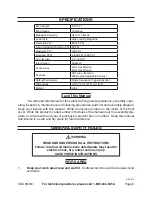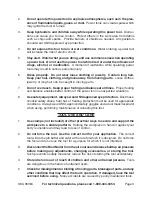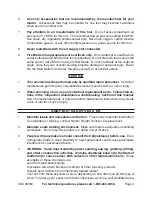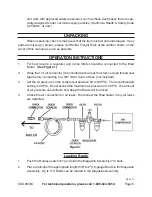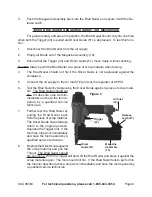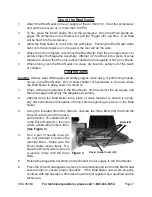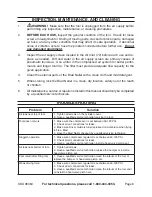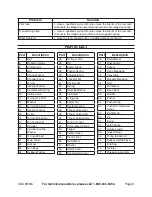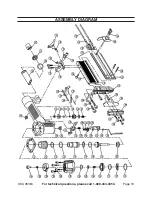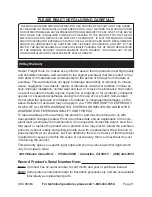
Page 3
SKU 96364
For technical questions, please call 1-800-444-3353.
2.
Do not operate this power tool in explosive atmospheres, such as in the pres-
ence of flammable liquids, gases, or dust. Power tools can create sparks which
may ignite the dust or fumes.
3.
Keep bystanders and children away while operating this power tool. Distrac-
tions can cause you to lose control. Protect others in the work area from debris
such as chips and sparks. Provide barriers or shields as needed. All spectators
should wear ANSI approved eye protection.
4.
Do not expose this tool to rain or wet conditions. Water entering a power tool
will increase the risk of electric shock.
5.
Stay alert. Watch what you are doing, and use common sense when operating
a power tool. Do not use this power tool while tired or under the influence of
drugs, alcohol, or medication. A moment of inattention while operating power
tools may result in serious personal injury.
6.
Dress properly. Do not wear loose clothing or jewelry. Contain long hair.
Keep your hair, clothing, and gloves away from moving parts. Loose clothes,
jewelry, or long hair can be caught in moving parts.
7.
Do not overreach. Keep proper footing and balance at all times. Proper footing
and balance enables better control of the power tool in unexpected situations.
8.
Use safety equipment. Always wear ANSI approved eye protection. Dust mask,
nonskid safety shoes, hard hat, or hearing protection must be used for appropriate
conditions. Always wear ANSI-approved safety goggles and a dust mask/respirator
when using, performing maintenance or reloading this tool.
TOOL USE AND CARE
1.
Use clamps (not included) or other practical ways to secure and support the
workpiece to a stable platform. Holding the workpiece in hand or against your
body is unstable and may lead to loss of control.
2.
Do not force the tool. Use the correct tool for your application. The correct
tool will do the job better and safer at the rate for which it is designed. Do not force
the tool and do not use the tool for a purpose for which it is not intended.
3.
Disconnect the Brad Nailer from the air source and release built up air pressure
before making any adjustments, changing accessories, or storing the tool.
Such preventive safety measures reduce the risk of starting the tool accidentally.
4.
Store idle tools out of reach of children and other untrained persons. Tools
are dangerous in the hands of untrained users.
5.
Check for misalignment or binding of moving parts, breakage of parts, and any
other condition that may affect the tool’s operation. If damaged, have the tool
serviced before using. Many accidents are caused by poorly maintained tools.


